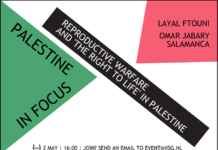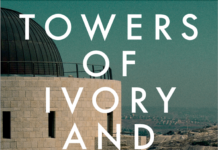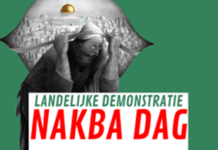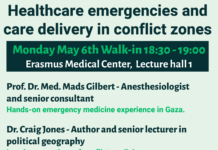Hanine Hassan
Middle East Eye / May 25, 2021
The temporary ceasefire has neither brought an end to the 14 years long military siege of Gaza nor will it prevent future Israeli attacks on the strip.
On Friday, a temporary ceasefire agreement was reached between Israel and Palestinian resistance factions in Gaza Strip after 11 days of relentless Israeli bombing of the besieged enclave. Despite the ceasefire, it is business as usual for Israel’s colonial practices in Gaza,
Israeli drones are still hovering above Gaza’s sky and its siege is still preventing the necessary humanitarian goods and medicines from reaching the population.
Israel’s latest operation “Guardians of the Wall” has killed at least 248 Palestinians and injured almost 2000 others, many with life-long disabilities. According to UN figures, nearly 1100 homes and commercial units were destroyed and at least 17 hospitals and clinics were damaged.
Although Palestinians went out across all of Palestine to celebrate the capacity of Palestinian groups in confronting Israel’s military arsenal, the temporary ceasefire has neither brought an end to Israel’s 14 year-long military siege of Gaza nor will it prevent any future Israeli attacks on the strip.
Israel’s latest onslaught has worsened the already fragile humanitarian situation in the Gaza Strip and will only aggravate the consequences of the global pandemic in Gaza, as its only Covid-19 centre had been levelled to the ground and its leading doctor was killed by an Israeli air strike.
Isolating Gaza
Since its inception as a movement and as a coherent ideology, Zionism thrived on the maximal amount of land appropriation in Palestine. Depending on the resources and the political, economic, and military benefits it could gain, different mechanisms were developed over the years to expropriate the occupied land in the West Bank and Gaza Strip without fully annexing it.
This splintering of the native Palestinian population in different secluded spaces sought to separate the colonizers from the colonized, and the colonized from their land. Israel wants to annex as much territory from the West Bank and Gaza Strip while keeping the Palestinian population outside of the Israeli body.
These spatial configurations of colonial societies are based on racist ideologies that facilitate absolute racialized geographical separation. However, only one group, the colonizer, is allowed to expand spatially, a process codified in law and built into the economy and sustained by political privileges.
In other words, Israel’s discriminatory laws form the basis of the apartheid regime imposed upon the Palestinian population as a whole, including the Palestinians on both sides of the Green Line, refugees and exiles denied their right of return. These laws are codified in Knesset legislation and military orders that govern the administration of the occupied Palestinian territory and prevent the Palestinians from full participation in economic life.
The Gaza Strip has always been the most seriously affected by Israel’s policies of disintegration due to its overpopulation, the incorporation of major parts of the strip’s territory into Israel, and its lack of economic structures that would benefit the occupation.
As Israel’s strategy in Gaza turned into an enclosure policy that was mapped out in the 1990s even before the signing of the Oslo Accords, Israel’s appropriation policy in Gaza consisted of three main phases.
The first one was mapping the land and isolating the space. The separation barrier built around Gaza Strip was single-handedly imposed by Israel, marking Gaza’s borders, and consists of an electronic fence, patrol roads alongside the fence, observation posts and a buffer zone that reaches up to two kilometres, eating up Palestinian agricultural land. Israel also restricts access to territorial waters up to nine miles out to sea.
As a result of this territorial limitation, the factual incarceration of two million people in Gaza became dependent on an Israeli permit regime that restricts all freedom of movement to a bare minimum. Social and family ties between the Palestinians in Gaza, the West Bank, Jerusalem and within the Green Line were completely disrupted.
This demarcation, however, is not just spatial; its core component is an economic isolation intended to reverse Palestinian economic development in virtually all aspects. Gaza’s trade, dispersal of tax revenues, telecommunication networks, monetary systems and business management were all tied to the Israeli bureaucracy which gradually erased domestic private investment.
Harvard scholar Sara Roy analyzed how Israel’s systematic policies of expropriation and de-institutionalization tore up the economic, social, political and geographical fabric of Palestinian society in the Gaza Strip. It was only after establishing a massive level of deterioration, intractable economic depression and “de-development” that Israel retrieved its settlers and all settlement infrastructure from the Gaza Strip in 2005.
A racialized space
The second phase involved the retrieval of Israeli settlers in order to create a racialized space where conditioning and violence at a large scale could occur without risking the lives of Israelis and with complete impunity.
Israel’s disengagement plan in 2005, i.e. the withdrawal of Jewish settlers from Gaza, was followed by besieging Gaza as a method of managing and controlling the natives and their land, and ultimately starving them into subjugation and fragmenting further the unity of the Palestinian body.
This final phase consisted of imposing a military siege on Gaza, and effectively blocking the Palestinians from all access to proper healthcare, education, travel, reconstruction material, job opportunities, economic revival and access to their own airspace and territorial waters. Israel then periodically bombs.
A report issued in September 2015 by the UN Conference on Trade and Development stated that Israel’s policies and successive military attacks have ravaged its already debilitated infrastructure and shattered its ability to produce for the domestic market, and left no time for reconstruction and economic recovery, hence the de-development of Gaza is accelerating a process by which development is not merely hindered but reversed.
Gaza’s two million inhabitants rely on coastal aquifers as their main source of fresh water, yet this water is not safe to drink. For the past 14 years, only a quarter of households receive running water every day, a few hours a day. Over 90 percent of the water extracted from its aquifer is unsafe for human consumption. Additionally, some 90 million litres of untreated and partially treated sewage are dumped in the sea off the strip.
The UN report warned six years ago that the economic blockade of Gaza as well as the three Israeli military operations it endured in 2008, 2012 and 2014 could make the strip “uninhabitable” by 2020 if the economic siege persisted.
We are one year and one more military attack beyond this. Gaza is unhabitable and its population has been sent into destitution.
Breaking Palestinian dignity
Moreover, as settler colonialism constantly feeds on land appropriation, Israel is not only concerned with confiscating more land from the Palestinians in Gaza, but also to secure already colonized lands from possible land claims by Palestinian refugees it had expelled.
Out of the 2219 Palestinians killed in the Israeli war in 2014, 56 percent were refugees displaced to Gaza, waiting to return to their lands which had been annexed by the state of Israel.
Israel’s ultimate goal is to weaken the Palestinians in order to disunite them, and turn them against each other; break their dignity, and their ability to resist. The impoverished Palestinians would fight each other for meagre resources and the social fabric would be torn apart.
The use of Hamas as part of Israel’s narrative of self-defence is just a convenient method to further deprive Palestinians of any counter-narrative to resist its settler-colonial practices.
This entire model of monopolizing livelihoods and halting any economic bettering is an instrument of subjugation that leads to invisible deaths, when more subtle forms of killing have been added to the numbers of Palestinians killed, such those deaths caused by the degradation of the quality of water, lack of healthcare, hygiene and the chronic shortages of electricity and fuel.
There is absolutely nothing that the Palestinian people can do on their own to stop this voracious Israeli need for more land, which is materialised through a prolonged and brutal military siege of Gaza.
One national movement
The question is now, what more is Israel planning in the long term for the six million Palestinians who live on the lands it fully wants for itself?
In the face of a state equipped to the teeth with an aggressive incentive, the Palestinians understand that Israeli settler-colonialism revolves around the structure, politics, and governmentality of its ongoing colonialism and the dispossession of Palestinian lands and bodies. Only by forming a united front against Israel across historic Palestine was the world able to hear the voices coming out of Palestine.
Now is the time to capitalize on this international show of solidarity and unite Palestinians behind one national liberation movement.
Hanine Hassan is a Teaching Fellow of Middle Eastern, South Asian, and African Studies (MESAAS) department at Columbia University












